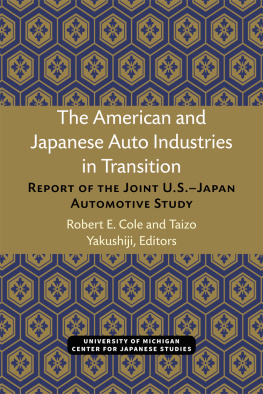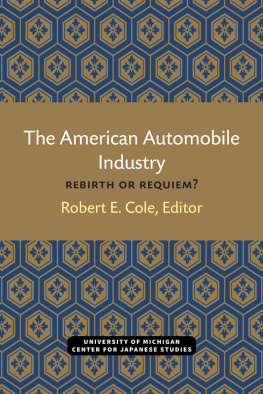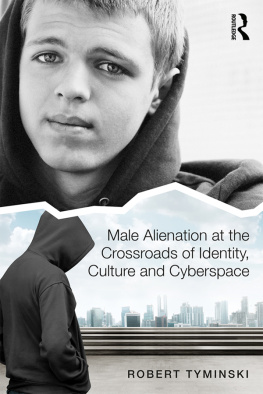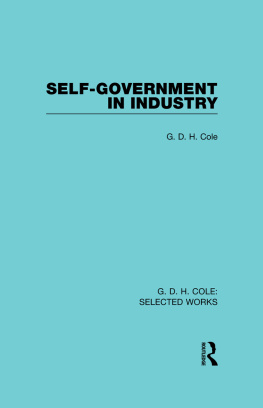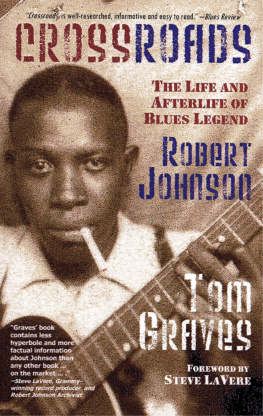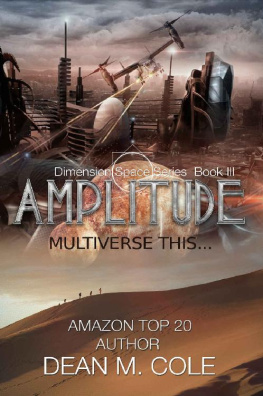Robert E. Cole - Industry at the Crossroads
Here you can read online Robert E. Cole - Industry at the Crossroads full text of the book (entire story) in english for free. Download pdf and epub, get meaning, cover and reviews about this ebook. year: 1982, publisher: University of Michigan Center for South and Southeast Asian Studies, genre: Politics. Description of the work, (preface) as well as reviews are available. Best literature library LitArk.com created for fans of good reading and offers a wide selection of genres:
Romance novel
Science fiction
Adventure
Detective
Science
History
Home and family
Prose
Art
Politics
Computer
Non-fiction
Religion
Business
Children
Humor
Choose a favorite category and find really read worthwhile books. Enjoy immersion in the world of imagination, feel the emotions of the characters or learn something new for yourself, make an fascinating discovery.

- Book:Industry at the Crossroads
- Author:
- Publisher:University of Michigan Center for South and Southeast Asian Studies
- Genre:
- Year:1982
- Rating:3 / 5
- Favourites:Add to favourites
- Your mark:
- 60
- 1
- 2
- 3
- 4
- 5
Industry at the Crossroads: summary, description and annotation
We offer to read an annotation, description, summary or preface (depends on what the author of the book "Industry at the Crossroads" wrote himself). If you haven't found the necessary information about the book — write in the comments, we will try to find it.
Industry at the Crossroads — read online for free the complete book (whole text) full work
Below is the text of the book, divided by pages. System saving the place of the last page read, allows you to conveniently read the book "Industry at the Crossroads" online for free, without having to search again every time where you left off. Put a bookmark, and you can go to the page where you finished reading at any time.
Font size:
Interval:
Bookmark:

THE UNIVERSITY OF MICHIGAN CENTER FOR JAPANESE STUDIES
MICHIGAN PAPERS IN JAPANESE STUDIES
NO. 7
INDUSTRY AT THE CROSSROADS
edited by
Robert E. Cole
Ann Arbor
Center for Japanese Studies
The University of Michigan
1982
Open access edition funded by the National Endowment for the Humanities/Andrew W. Mellon Foundation Humanities Open Book Program.
ISBN 0-939512-12-2
Copyright 1982
by
Center for Japanese Studies
The University of Michigan
Printed in the United States of America
ISBN 978-0-939512-12-6 (paper)
ISBN 978-0-472-88013-3 (ebook)
ISBN 978-0-472-90204-0 (open access)
The text of this book is licensed under a Creative Commons Attribution-NonCommercial-NoDerivatives 4.0 International License: https://creativecommons.org/licenses/by-nc-nd/4.0/
TABLE OF CONTENTS
Robert E. Cole
Harold T. Shapiro
Paul W. McCracken
Mark G. Aron
Robert E. Hudec
Hideyo Tamura
Douglas A. Fraser
William J. Abernathy and Kim B. Clark
Yoshitaka Fujita
Robert B. Stone
Robert E. Cole
The mood of a conference can tell us a great deal about the state of mind pervading an industry. The mood of our first U. S.-Japan Auto Conference in January 1981 could only be described as electric. People wanted to know what our problems were and how we could begin to solve them. Inherent in the latter issue was the question, what could we learn from the Japanese? One left the conference with a sense that there was a call for action, a mandate to address the problems facing the industry.
The mood, about a year later, at our March 1982 U. S.-Japan Auto Conference was far more subdued. While undoubtedly this reflected the stream of statistics confirming the continually depressed state of the industry, we would like to think that another dynamic was operating as well. Whereas the 1981 conference was electric, a state of mind which flowed from a certain frustration at seemingly overwhelming difficulties and often vague expectations of what we might learn from the Japanese, the 1982 conference was more workmanlike in the sense that speakers discussed specifically what progress was being made in addressing problems. This more subdued, pragmatic approach continued throughout and was reinforced by the workshops held the day after the main conference.
Instead of discussing the virtues of the Just-in-Time system in Japan, we addressed the practical problems of introducing such a system in U. S. firms. Instead of railing about the benefits or failings of regulation of the industry, we discussed what we could reasonably expect from regulation. Instead of exhorting the industry to adopt Japanese practices willy-nilly, we focused on some of the limitations of the Japanese model in a range of different areas. Instead of trying to identify some magic key to Japanese success in the automotive industry, we discussed the interrelationships among various factors. At the same time, we continued to explore the basic issues transforming the auto industry worldwide. In this connection, we sought to unravel some of the complexities associated with the internationalization of the auto industry and trade obligations under the GATT.
To be sure, the second conference may not have provided the same excitement as the first one. Yet we believe that more was accomplished in terms of our educational mission.
I would like once again to thank Harold Shapiro, President of the University, for his strong support for our efforts. The Planning Committee was composed of: David E. Cole, Director of the Office for the Study of Automotive Transportation; Susan Lipschutz, Assistant to the President of the University; Donald N. Smith, Director of the Industrial Development Division of the Institute of Science and Technology; Alfred S. Sussman, Dean of the Horace H. Rackham School of Graduate Studies; and myself. We also benefited greatly from the advice of our Advisory Board, composed of: Donald F. Ephlin, Vice President and Director of the National Ford Department, United Auto Workers; David S. Potter, Vice President and Group Executive of Public Affairs Group, General Motors Corporation; Fred G. Secrest, Consultant and former Executive Vice President, Ford Motor Company; and Leonard Woodcock, Adjunct Professor of Political Science, the University of Michigan.
Downs Herold provided invaluable professional guidance in organizing the conference, and Donna Welton, the Conference Coordinator, performed admirably.
Robert E. Cole
Professor of Sociology
Project Director, Joint U. S.-Japan Automotive Study
University of Michigan
Harold T. Shapiro
On behalf of the Regents, the Executive Officers, and the faculty of the University, it is my great pleasure to welcome you to todays conference. I want to extend a special welcome to the speakers and discussion leaders who will play such a critical role in the conference. The University of Michigan is proud to have started what is now a series of conferences on an important and timely subject. We are proud to have served, at least in part, as a catalyst for focusing discussion on a very important problem, the automotive industry in the United States and Japan.
I am particularly attracted by the nature of the title for this conference, Industry at the Crossroads. An industrial economy, such as we have had since World War II, is always at the crossroads. One of the characteristics of a market economy is that there are constant tensions. These tensions are not necessarily symptoms of a disease; these tensions are, more often than not, symptoms of the markets discipline as it tries to allocate production to the most efficient producers. So, in the rapidly changing world in which we now find ourselves, industry, and especially modern industry, is always at a crossroads.
In this latter respect industry is analogous to quality higher education. In my Inaugural Address in 1980 I said that, for a very similar reason, quality education is always at a crossroads. The world around us is a dynamic one and if we do not change with it we will be left behind. There is an anecdote which is told about a football coach, Woody Hayes at Ohio State University. They claim that once, when he was a bit aggravated, he told one of the players, Look, youre either getting better or youre getting worse. And while I would not like to be a football player playing under that exhortation, there is something to it both in the worlds of higher education and of industry. You are either getting better or you are getting worse; you are either leading the pack or falling back. In a dynamic economy, such as we have today, comparative advantage is always changing. There is, and should be, therefore, a continuous shifting in the international distribution of production in manufacturing and in other areas.
Why is it appropriate that this issue of the shifting international distribution of production, the changing configuration of industry in various parts of the world, be discussed at a university? It is appropriate for a number of reasons, but I will mention only one. The university, as I see it, has a dual role in society. First of all, it is societys servant. We have to train people in the skills society wants: doctors, lawyers, engineers, accountants, and many others. We perform the function of passing on the accumulated knowledge of our civilization and, in that sense, we also serve as a servant of society. However, there is another important role of the university which places it in a very sensitive relationship to society. It is also our responsibility to serve as societys critic. What does that mean in the context of this conference? It is a universitys responsibility to think of alternative visions of the world, and to remind us that the world as we find it today is just one possible case. If we are going to grow, in the broadest sense of that wordnot simply economic growth but growth as a civilizationwe must consider alternative ways of doing things. Others usually face those alternative visions only in a time of crisis or semicrisis. A university must do this constantly if it is to meet its full responsibilities to society. That is why I am glad that the University of Michigan is serving as host to these conferences and why I thank my colleagues who have put this conference together.
Font size:
Interval:
Bookmark:
Similar books «Industry at the Crossroads»
Look at similar books to Industry at the Crossroads. We have selected literature similar in name and meaning in the hope of providing readers with more options to find new, interesting, not yet read works.
Discussion, reviews of the book Industry at the Crossroads and just readers' own opinions. Leave your comments, write what you think about the work, its meaning or the main characters. Specify what exactly you liked and what you didn't like, and why you think so.

